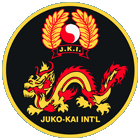HISTORY OF THE OKINAWAN MARTIAL ARTS

Okinawa is the largest island in the Ryukyu archipelago south of Japan and is situated between Japan and Thailand. Although early in its history, independent Kings ruled Okinawa which paid tribute to China, who conquered it in the 16th century. By the mid-14th century, Okinawa had established relations with other Asian countries. It is thought that Okinawan's visiting China brought back Kempo, and certainly the contact with China introduced elements of Wushu (martial arts) into the Okinawan systems. A permanent Okinawan community was organized for China during the Ming period (1386-1644), and later a Chinese community was established on Okinawa. This they called the “36 families.” Chinese martial arts masters taught Wushu and Kempo to the Okinawan's.
The Japanese invaded in the 17th century and the Okinawan's were forced to pay tribute to both China and Japan. However, continual warfare in Japan forced many Japanese citizens to leave the country. Many arrived in Okinawa, bringing with them their martial arts skills. As a result, the Okinawan martial arts were influenced by both Chinese and Japanese fighting systems. Okinawa was completely taken over by the Japanese in the 19th century and is now a part of the Japanese empire. Both China and Japan banned the ownership of weapons by Okinawan's, which led to the development of empty-hand techniques. Okinawan's also developed ways to convert farming implements into deadly weapons which is known today as Kobudo. Different villages and regions developed their own styles. Three (3) main branches of martial arts developed in Okinawa, which are known collectively as Okinawa-Te (Okinawa hand). These three branches were Shuri-te (Shorin-ryu), Naha-te (Goju-ryu) and Tomari-te (Tomari-ryu). From these stemmed the art of Karate-jutsu (China hand art) in respect for the three cultures (“Kara” for China, “Te” for Okinawa and “Jutsu” for Japan).
By the 18th century, modern Okinawan Karate had begun to emerge. In the late 1880s, the word “Karate,” meaning Tang or China hand, was in use. In the early 20th century, Funakoshi Gichin brought Okinawan Karate to Japan and then to the rest of the world. Judo and Kendo were introduced to Okinawa by Japan in the beginning of the 20th century. Shorin-ryu Karate is the world's largest system and is estimated to have influenced more than 80 percent of all contemporary Karate-do styles.
Tomari-te has long since died out as an art. Some state that it was preserved in the Kempo Karate system of Shigeru Nakamura (one of Shihan Toma’s instructors). Most of the well known, traditional Karate-do arts that are practiced worldwide were founded around the beginning of the 20th century (early 1900s). Professor Church bluntly told Dr. Sacharnoski many years ago that “Karate-do is about as old as the car.” Many fail to realize that karate was founded, developed and perfected on Okinawa. Today there are two major Okinawan Karate styles. They are Shorin-ryu and Goju-ryu. Almost all Karate today is a sport (including the Karate of Okinawa). Few non-sport systems exist....Juko-Kai is one of them.
The Japanese invaded in the 17th century and the Okinawan's were forced to pay tribute to both China and Japan. However, continual warfare in Japan forced many Japanese citizens to leave the country. Many arrived in Okinawa, bringing with them their martial arts skills. As a result, the Okinawan martial arts were influenced by both Chinese and Japanese fighting systems. Okinawa was completely taken over by the Japanese in the 19th century and is now a part of the Japanese empire. Both China and Japan banned the ownership of weapons by Okinawan's, which led to the development of empty-hand techniques. Okinawan's also developed ways to convert farming implements into deadly weapons which is known today as Kobudo. Different villages and regions developed their own styles. Three (3) main branches of martial arts developed in Okinawa, which are known collectively as Okinawa-Te (Okinawa hand). These three branches were Shuri-te (Shorin-ryu), Naha-te (Goju-ryu) and Tomari-te (Tomari-ryu). From these stemmed the art of Karate-jutsu (China hand art) in respect for the three cultures (“Kara” for China, “Te” for Okinawa and “Jutsu” for Japan).
By the 18th century, modern Okinawan Karate had begun to emerge. In the late 1880s, the word “Karate,” meaning Tang or China hand, was in use. In the early 20th century, Funakoshi Gichin brought Okinawan Karate to Japan and then to the rest of the world. Judo and Kendo were introduced to Okinawa by Japan in the beginning of the 20th century. Shorin-ryu Karate is the world's largest system and is estimated to have influenced more than 80 percent of all contemporary Karate-do styles.
Tomari-te has long since died out as an art. Some state that it was preserved in the Kempo Karate system of Shigeru Nakamura (one of Shihan Toma’s instructors). Most of the well known, traditional Karate-do arts that are practiced worldwide were founded around the beginning of the 20th century (early 1900s). Professor Church bluntly told Dr. Sacharnoski many years ago that “Karate-do is about as old as the car.” Many fail to realize that karate was founded, developed and perfected on Okinawa. Today there are two major Okinawan Karate styles. They are Shorin-ryu and Goju-ryu. Almost all Karate today is a sport (including the Karate of Okinawa). Few non-sport systems exist....Juko-Kai is one of them.
